
Guanacaste: Costa Rica's Sun-Kissed Paradise
Explore Guanacaste, Costa Rica's haven of sun-kissed beaches, lush national parks, and vibrant local culture, offering an unforgettable blend of relaxation and adventure.
Guanacaste, located on Costa Rica's stunning Pacific coast, is a haven for beach lovers and adventure seekers alike. Known for its sunny, dry climate, this region boasts some of the most beautiful beaches in the country, perfect for sunbathing, swimming, and water sports. From the pristine shores of Playa Conchal to the vibrant surf scene at Tamarindo, there's a beach for every type of traveler. Beyond its coastline, Guanacaste is rich in natural wonders. The region is home to several national parks, including Rincon de la Vieja, where you can hike through lush forests, spot exotic wildlife, and even witness volcanic activity. For those looking to relax, the hot springs near the volcano provide a perfect retreat. Guanacaste's culture is as vibrant as its landscape. The local towns and cities, such as Liberia and Nicoya, offer a glimpse into traditional Costa Rican life. You can enjoy local cuisine, vibrant festivals, and warm hospitality that make this region truly special.
Local tips in Guanacaste
- Visit during the dry season (December to April) for the best weather and beach activities.
- Rent a car to explore the region's diverse landscapes and hidden gems at your own pace.
- Don't miss the local festivals, like the Liberia Fiestas, to experience authentic Guanacaste culture.
- Try local dishes like Gallo Pinto and Casado for a true taste of Costa Rican cuisine.
- Pack plenty of sunscreen and insect repellent to stay comfortable during your outdoor adventures.
Guanacaste: Costa Rica's Sun-Kissed Paradise
Guanacaste, located on Costa Rica's stunning Pacific coast, is a haven for beach lovers and adventure seekers alike. Known for its sunny, dry climate, this region boasts some of the most beautiful beaches in the country, perfect for sunbathing, swimming, and water sports. From the pristine shores of Playa Conchal to the vibrant surf scene at Tamarindo, there's a beach for every type of traveler. Beyond its coastline, Guanacaste is rich in natural wonders. The region is home to several national parks, including Rincon de la Vieja, where you can hike through lush forests, spot exotic wildlife, and even witness volcanic activity. For those looking to relax, the hot springs near the volcano provide a perfect retreat. Guanacaste's culture is as vibrant as its landscape. The local towns and cities, such as Liberia and Nicoya, offer a glimpse into traditional Costa Rican life. You can enjoy local cuisine, vibrant festivals, and warm hospitality that make this region truly special.
When is the best time to go to Guanacaste?
Iconic landmarks you can’t miss
Monteverde Cloud Forest Biological Preserve
Explore the breathtaking Monteverde Cloud Forest Biological Preserve, a natural wonder showcasing rich biodiversity, stunning trails, and unforgettable wildlife encounters.
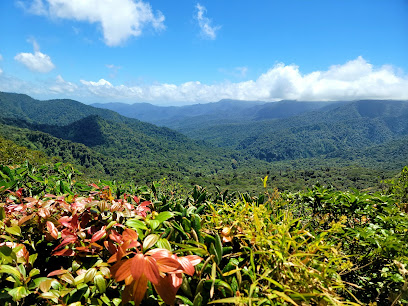
Parque Nacional Rincón de la Vieja
Explore the stunning landscapes, volcanic activity, and diverse wildlife at Parque Nacional Rincón de la Vieja, a natural wonder in Guanacaste, Costa Rica.
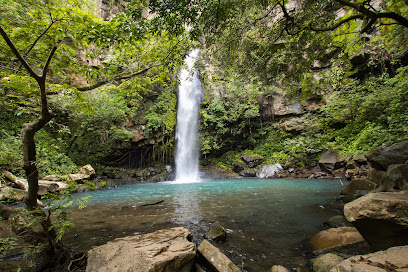
Parque Nacional Marino Las Baulas
Explore the breathtaking beauty and rich biodiversity of Parque Nacional Marino Las Baulas, a must-visit national park in Costa Rica's Guanacaste Province.

Bernabela Ramos Park
Explore Bernabela Ramos Park in Santa Cruz, Guanacaste—a tranquil park featuring lush landscapes, perfect for relaxation and family outings in Costa Rica.
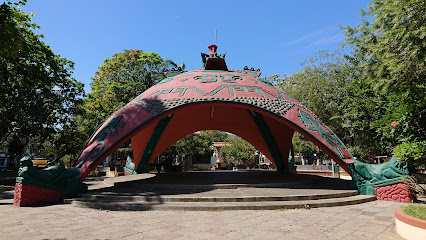
Parque Nacional Volcán Tenorio
Explore the breathtaking beauty of Parque Nacional Volcán Tenorio, home to the stunning Rio Celeste and diverse wildlife in Costa Rica's Guanacaste Province.
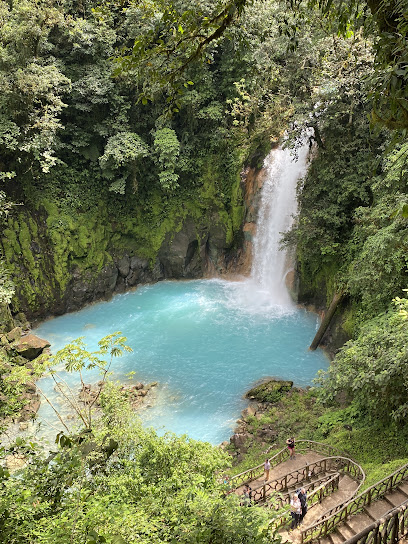
JW Marriott Guanacaste Resort & Spa
Discover luxury and adventure at JW Marriott Guanacaste Resort & Spa, where breathtaking ocean views and world-class amenities await your arrival.
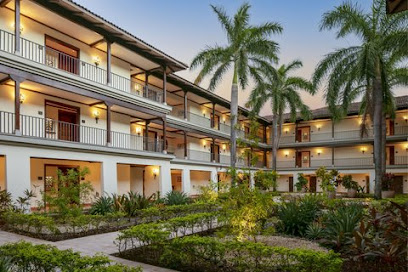
Daniel Oduber Quirós International Airport.
Explore the beauty of Costa Rica through Daniel Oduber Quirós International Airport, your gateway to the stunning Guanacaste region's beaches and wildlife.
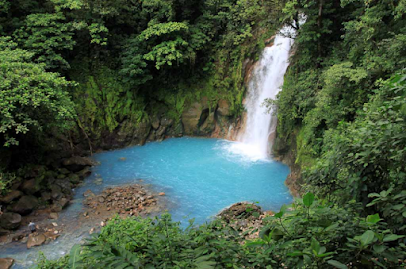
Centro de Rescate Las Pumas
Discover the wonders of wildlife at Centro de Rescate Las Pumas, a sanctuary dedicated to the rescue and rehabilitation of Costa Rican animals.
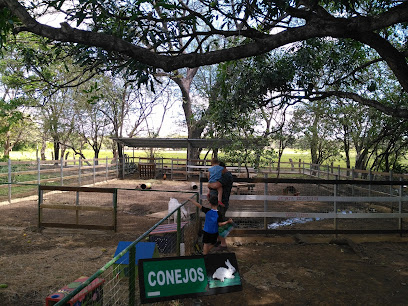
Parque Nacional Santa Rosa
Discover the stunning landscapes, rich biodiversity, and historical significance of Parque Nacional Santa Rosa in Guanacaste, Costa Rica.
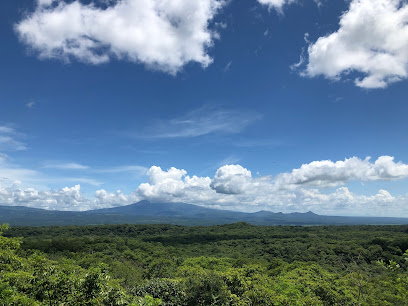
Monteverde Butterfly Gardens
Explore the vibrant world of butterflies at Monteverde Butterfly Gardens, a natural paradise in Costa Rica showcasing over 40 species in a stunning cloud forest setting.
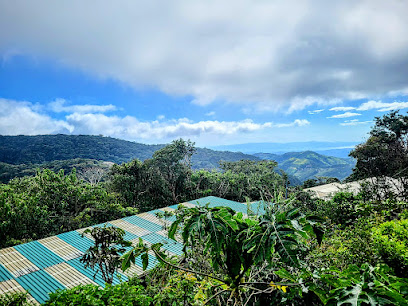
Rio Negro Hot Springs
Experience relaxation in nature at Rio Negro Hot Springs, an oasis of thermal baths in Guanacaste Province, Costa Rica.

Parque Nacional Guanacaste
Explore the stunning landscapes and rich biodiversity of Parque Nacional Guanacaste, a national park that embodies the natural beauty of Costa Rica.
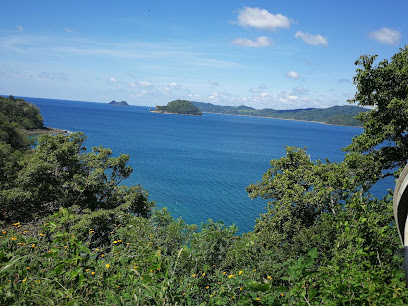
Costa Rica Unique Tours & Transfers
Experience Costa Rica like never before with Unique Tours & Transfers, your gateway to adventure sports, cultural tours, and seamless transportation.
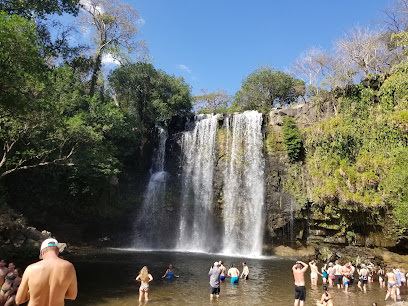
Black Stallion Eco Park & Estates
Explore the lush landscapes and thrilling adventures at Black Stallion Eco Park & Estates in Guanacaste, a premier eco-tourism destination in Costa Rica.
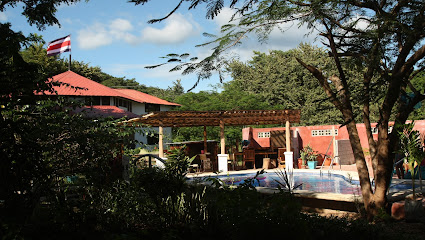
Viento Fresco Waterfall
Discover tranquility at Viento Fresco Waterfall in Guanacaste, Costa Rica – a hidden gem surrounded by lush nature and breathtaking views.
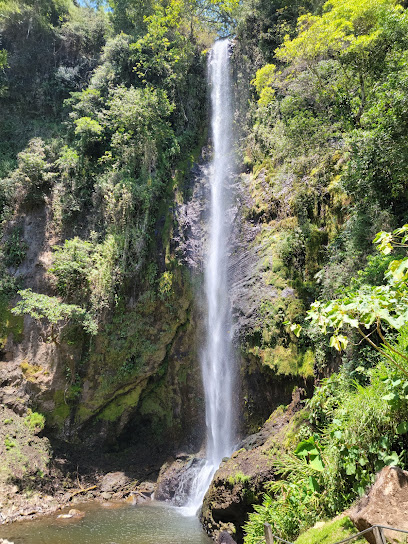
Unmissable attractions to see
Ponderosa Adventure Park
Discover the thrill and beauty of Costa Rica at Ponderosa Adventure Park, where adventure meets wildlife in a breathtaking natural setting.
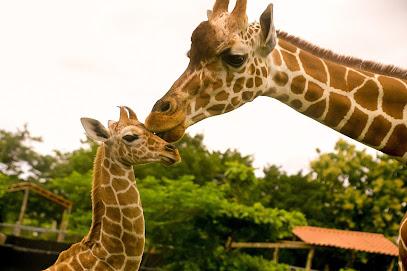
La Leona Waterfall Adventure Hike
Experience the breathtaking beauty of La Leona Waterfall in Guanacaste, Costa Rica, where nature's splendor awaits around every corner.
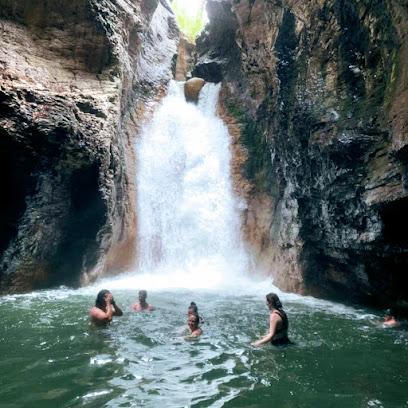
Parque Nacional Rincón de la Vieja
Explore the diverse ecosystems and stunning geothermal features of Parque Nacional Rincón de la Vieja in Guanacaste, Costa Rica.

Playa Conchal
Experience the breathtaking beauty of Playa Conchal, a pristine beach in Guanacaste Province, known for its shell-covered shores and vibrant marine life.
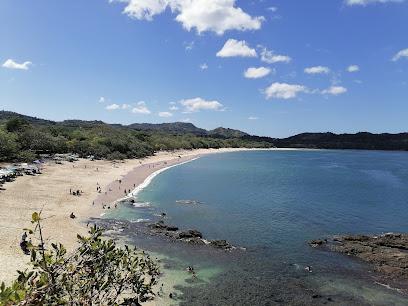
Parque Nacional Marino Las Baulas
Explore the beauty of Parque Nacional Marino Las Baulas, a sanctuary for endangered turtles and a stunning national park in Costa Rica's Guanacaste Province.

Tamarindo Beach Costa Rica
Discover Tamarindo Beach in Costa Rica: A stunning tropical paradise with golden sands, thrilling water sports, and vibrant nightlife for an unforgettable getaway.
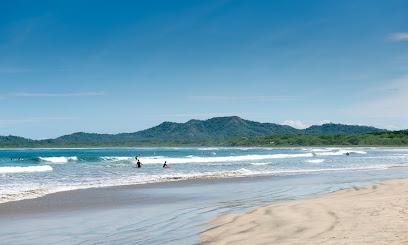
Bernabela Ramos Park
Experience the natural beauty and community spirit at Bernabela Ramos Park, a must-visit attraction in Santa Cruz, Guanacaste Province.
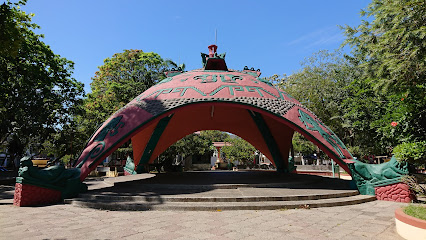
Four Seasons Peninsula Papagayo, Costa Rica
Experience luxury and adventure at Four Seasons Peninsula Papagayo, a premier resort in Costa Rica's breathtaking Guanacaste region.
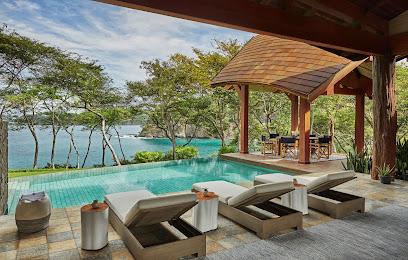
Buena Vista Del Rincon Eco Adventure Park, Hotel & Spa
Unwind in nature's paradise at Buena Vista Del Rincon Eco Adventure Park, Hotel & Spa, where adventure meets tranquility in Costa Rica's lush landscape.

Del Coco Beach
Discover the beauty of Del Coco Beach in Guanacaste Province, Costa Rica, where golden sands meet vibrant marine life and unforgettable sunsets.
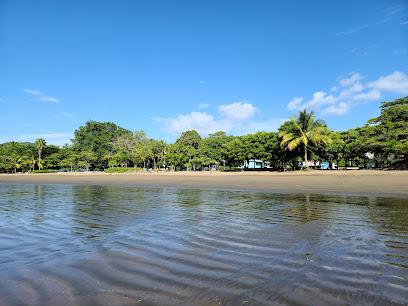
Reserva Conchal Beach Resort, Golf & Spa
Discover the ultimate luxury experience at Reserva Conchal Beach Resort, Golf & Spa, offering breathtaking beaches and world-class amenities in Costa Rica.

Playa Nacascolo
Experience the pristine beauty of Playa Nacascolo in Guanacaste Province, Costa Rica, where tranquility meets breathtaking natural landscapes.
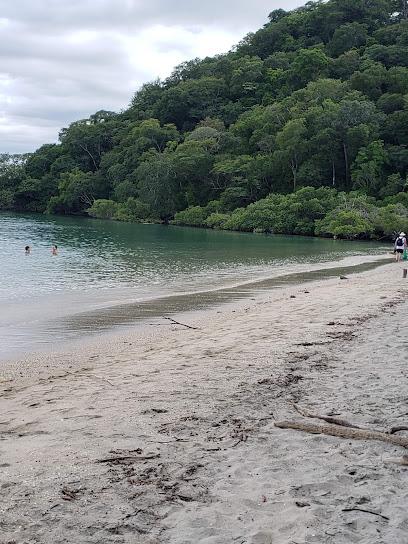
Centro de Rescate Las Pumas
Explore the heart of wildlife conservation at Centro de Rescate Las Pumas in Guanacaste, Costa Rica, and discover a sanctuary for rescued animals.

Pacific Coast Dive Center
Explore the wonders of the underwater world at Pacific Coast Dive Center in Playa Flamingo, Costa Rica. Perfect for divers of all levels!

Parque Nacional Palo Verde
Explore the breathtaking biodiversity and stunning landscapes of Parque Nacional Palo Verde, a premier destination for nature lovers in Guanacaste, Costa Rica.

Essential places to dine
Green Papaya Taco Bar
Experience authentic tacos bursting with flavor at Green Papaya Taco Bar in Tamarindo – a culinary gem in Costa Rica's Guanacaste Province.
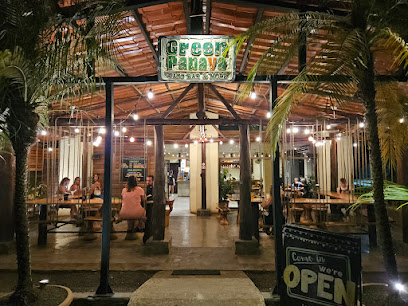
Lola's
Discover Lola's at Playa Avellana: Enjoy organic cuisine, refreshing cocktails, and breathtaking ocean views in Costa Rica's coastal paradise.

Restaurante Coco Loco
Experience authentic Costa Rican cuisine at Restaurante Coco Loco, offering oceanfront dining and vibrant flavors in Playa Flamingo.
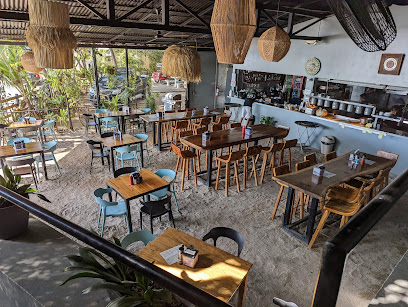
Father Rooster's
Discover exquisite flavors at Father Rooster's in Guanacaste Province—where culinary excellence meets breathtaking coastal views.
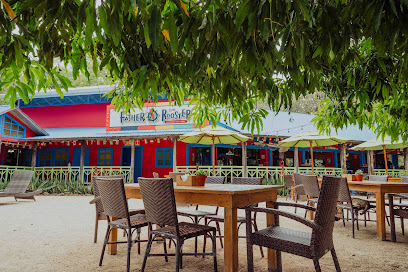
L' Estanco El Jardin Escondido
Experience exceptional cuisine at L' Estanco El Jardin Escondido in Tamarindo, where local flavors meet artistic presentation.

Patagonia del Mar
Experience exquisite dining at Patagonia del Mar, where fresh local ingredients meet breathtaking ocean views in Guanacaste Province.
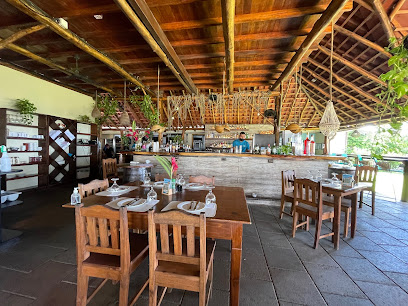
Gusto Beach Restaurant Pizzeria
Experience exquisite flavors at Gusto Beach Restaurant Pizzeria in Sámara – where delicious cuisine meets breathtaking ocean views.
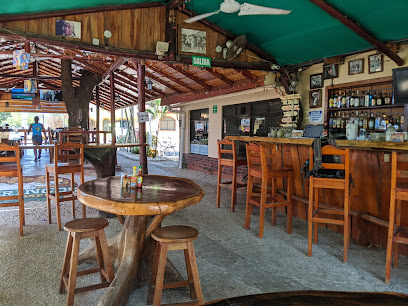
Pangas Beach Club
Discover Pangas Beach Club in Tamarindo: where fresh seafood meets stunning ocean views in an unforgettable dining experience.
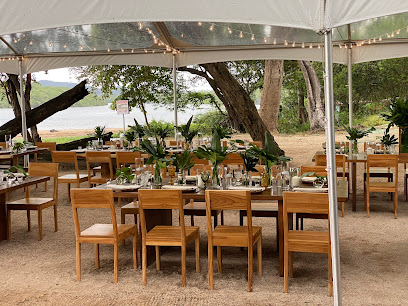
La Boca Tamarindo
Discover La Boca Tamarindo: A vibrant restaurant offering delicious pasta, pizza & cocktails in the heart of Guanacaste's stunning coastal paradise.
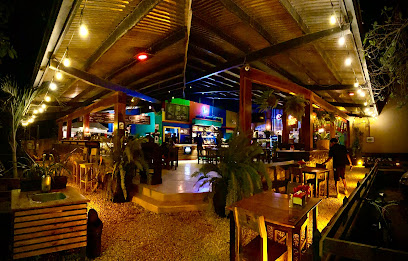
Gracia At Mar Vista
Discover the exquisite flavors and stunning views at Gracia At Mar Vista - A must-visit culinary destination in Flamingo, Costa Rica.
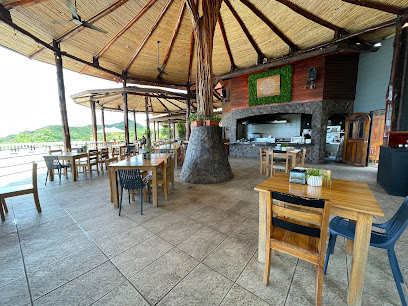
Ginger Restaurant Bar
Experience the vibrant flavors of Costa Rica at Ginger Restaurant Bar in Playa Hermosa - where every dish tells a story.

Surf Box
Experience coastal flavors at Surf Box in Playa Flamingo - where fresh ingredients meet vibrant atmosphere!
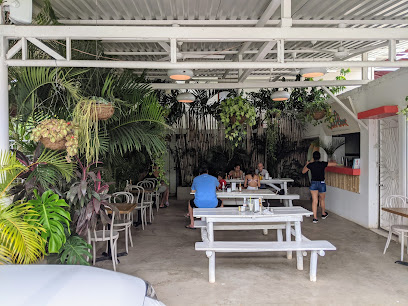
The Shack
Discover the vibrant flavors and lively atmosphere at The Shack in Potrero - where great food meets unforgettable live music!

Soda Lula
Discover the heart of Costa Rican cuisine at Soda Lula in Comunidad - an affordable haven for food lovers seeking local flavor.
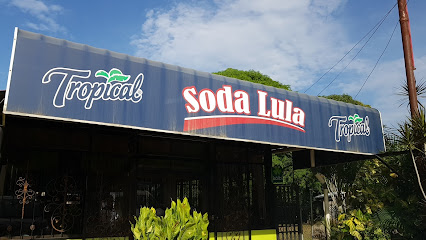
The Lookout Restaurant
Experience fresh seafood with breathtaking views at The Lookout Restaurant in Guanacaste, Costa Rica - A must-visit for culinary enthusiasts.
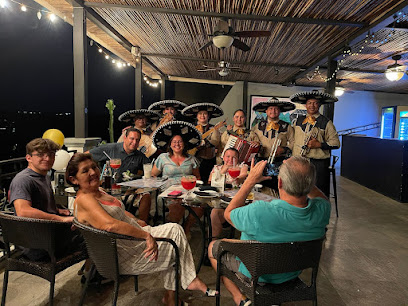
Markets, malls and hidden boutiques
Rumbo Pura Vida (Rumbo Shop Aeropuerto Internacional Liberia, Guanacaste)
Discover authentic Costa Rican souvenirs at Rumbo Pura Vida, the ultimate gift shop in Liberia International Airport, Guanacaste.

Sea Star Souvenir
Discover unique Costa Rican souvenirs at Sea Star Souvenir in Brasilito, a vibrant shop offering handcrafted treasures and local artistry.
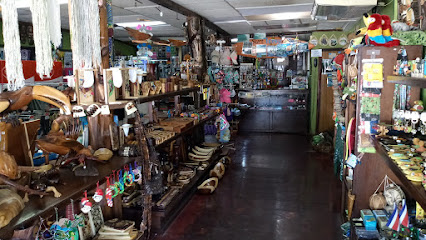
Britt Shop Grand Papagayo
Explore a treasure trove of souvenirs and local crafts at Britt Shop Grand Papagayo, the perfect stop for unique gifts in Costa Rica.

Craft Market
Explore the Craft Market in Palmira for unique Costa Rican souvenirs like handcrafted jewelry, local coffee, and exquisite wood crafts.
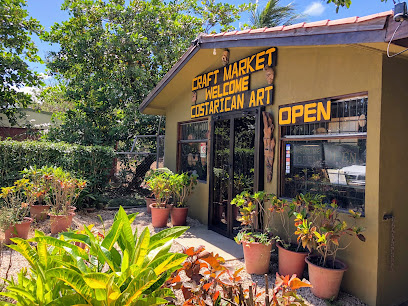
Souvenir Ocarina
Explore the charm of Costa Rica at Souvenir Ocarina, where unique handcrafted treasures and the essence of local culture await every visitor.
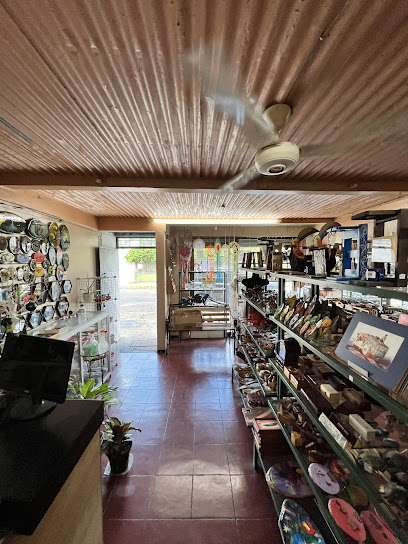
Britt Shop
Discover unique gifts and delightful souvenirs at Britt Shop, your go-to destination in Guanacaste for local treasures and artisanal delights.
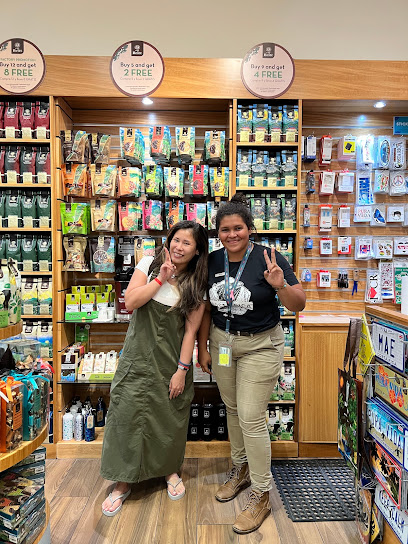
Casa Mare Tamarindo
Explore Casa Mare Tamarindo - Your destination for stylish dresses and vibrant Costa Rican beach fashion.

Love Nosara
Experience the vibrant fashion scene at Love Nosara, where unique styles meet the laid-back spirit of Costa Rica's beautiful coastline.
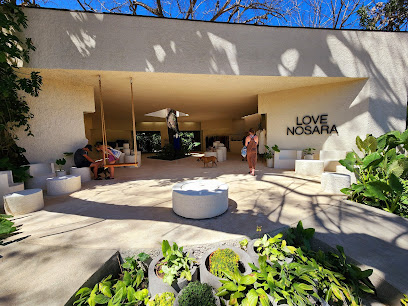
Britt Shop - Villa Sol
Explore Britt Shop - Villa Sol in Playa Hermosa for unique souvenirs, local crafts, and delightful Costa Rican gifts to cherish forever.
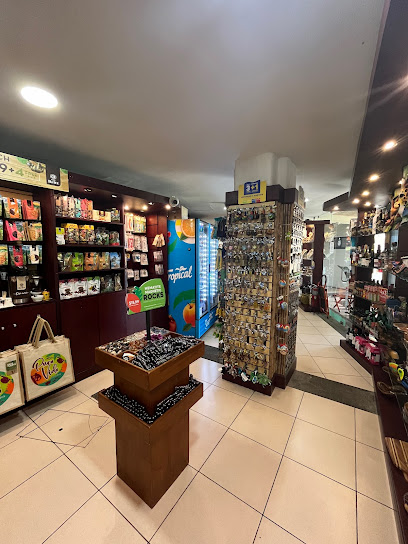
Azul Profundo Boutique
Discover the charm of Costa Rican fashion and unique souvenirs at Azul Profundo Boutique in Tamarindo.

Mono Congo Loco Store
Discover creativity at Mono Congo Loco Store in Guanacaste, Costa Rica – a paradise for artists and art lovers alike.
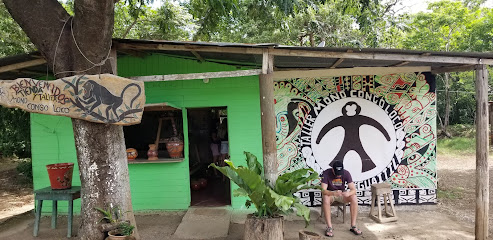
Boutique Le Shop
Explore the latest trends at Boutique Le Shop, Liberia's premier destination for women's clothing and unique fashion finds.

Buena Nena Tamarindo
Discover unique Costa Rican fashion at Buena Nena Tamarindo, where contemporary style meets local artistry for an unforgettable shopping experience.
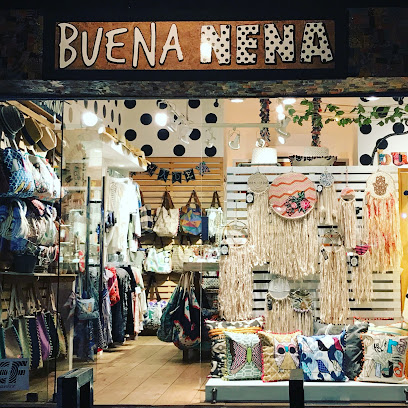
Britt Shop Planet Hollywood
Discover the charm of Costa Rican culture at Britt Shop, offering a delightful selection of souvenirs, local delicacies, and unique gifts in Planet Hollywood, Liberia.

Guana Tribe Souveniers
Explore Guana Tribe Souveniers for unique Costa Rican crafts, authentic gifts, and vibrant local culture in the heart of Tamarindo.

Essential bars & hidden hideouts
Sharky’s Sports Bar
Experience the thrill of sports and delicious cuisine at Sharky’s Sports Bar, Tamarindo's go-to destination for fun and flavor.
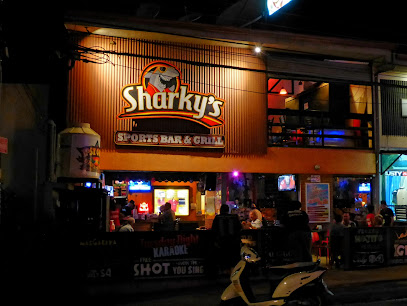
Bar El Ancla
Discover the tropical charm of Bar El Ancla in Coco, where refreshing drinks and friendly vibes create the perfect getaway.
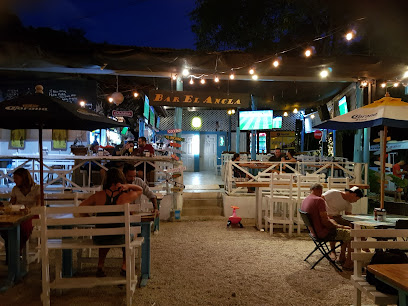
The Shack
Experience the vibrant atmosphere at The Shack in Potrero, where delicious food meets live music in a picturesque coastal setting.
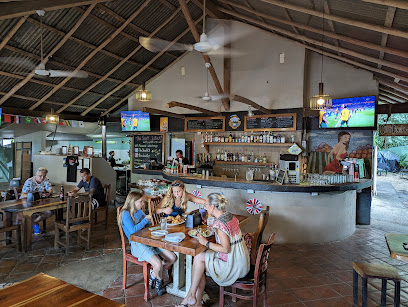
HACIENDA BLU BEACH
Discover a vibrant culinary haven at Hacienda Blu Beach, where fresh sushi meets live music and breathtaking ocean views in Guanacaste, Costa Rica.
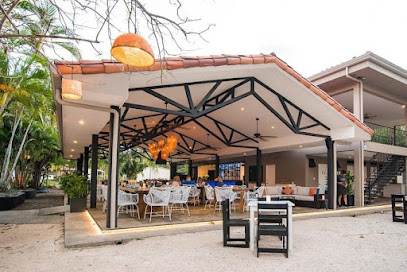
Numu Taproom and Bistro by Chef Nicolas Devenelle
Discover Numu Taproom and Bistro in Guanacaste, where exquisite cuisine meets a vibrant bar atmosphere, perfect for every traveler.
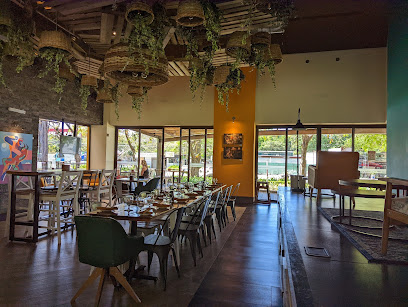
Crazy Monkey Bar
Crazy Monkey Bar in Tamarindo offers a lively atmosphere, delicious cocktails, and live music, perfect for a memorable night out in Guanacaste.

Surf Club Bar & Grill
Experience the flavors of Costa Rica with a beachfront dining adventure at Surf Club Bar & Grill, the perfect spot for families and sports fans alike.
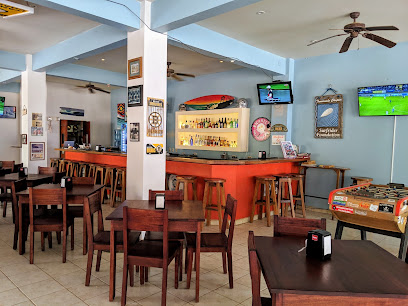
Microbar Samara
Discover the lively nightlife at Microbar Samara, a vibrant bar in Guanacaste Province, where locals and tourists unite for unforgettable moments.
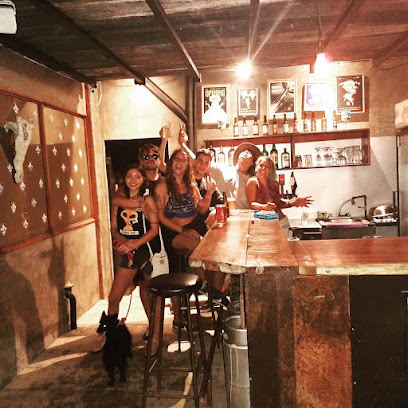
The Garden Bar
Experience the vibrant flavors of Costa Rica at The Garden Bar, a top grill destination in Playa del Coco, where culinary delights meet tropical charm.
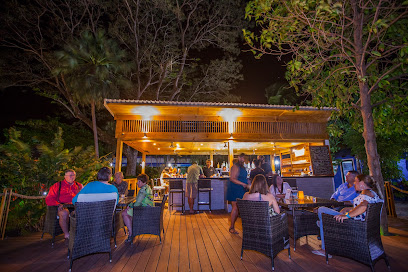
The Whiskey Howler beach bar and grill
Experience the ultimate culinary delight at The Whiskey Howler beach bar and grill in Potrero, where American and sushi flavors meet the beauty of Guanacaste.

Tortuga Bar
Discover Tortuga Bar in Coco, Costa Rica - a lively grill bar offering delicious cuisine and stunning coastal views for an unforgettable dining experience.
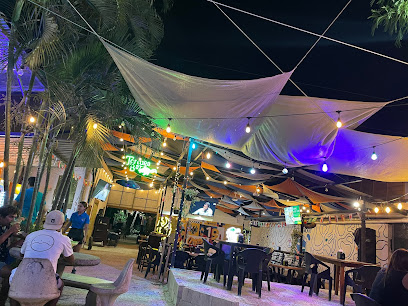
CATA Agave Bar
Experience the best of Tamarindo nightlife at CATA Agave Bar, where craft cocktails and breathtaking sunsets unite in a lively atmosphere.
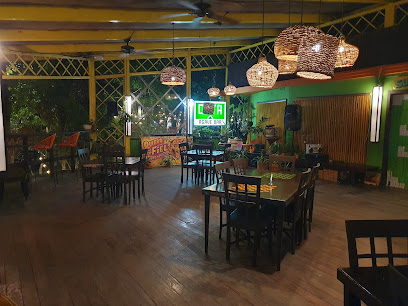
Monkey's Bar/Restaurant
Experience the vibrant flavors and stunning views at Monkey's Bar/Restaurant in Guanacaste, a unique grill perfect for beachside dining.
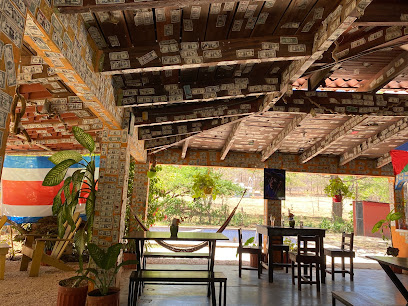
Bar Flipper
Experience the vibrant nightlife at Bar Flipper in Coco, Costa Rica, where delicious food and drinks meet a lively and welcoming atmosphere.
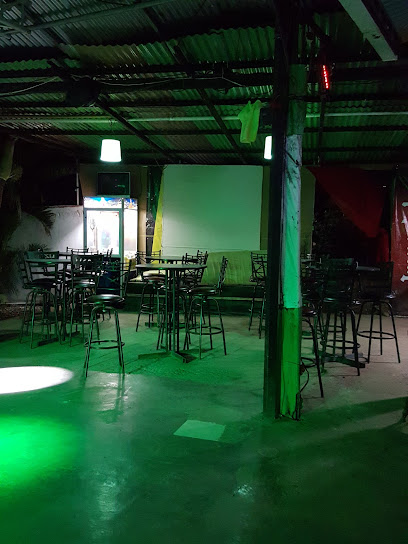
Zarpe
Experience the vibrant cocktail culture of Costa Rica at Zarpe, where creativity meets tropical flavors in the heart of Playas Del Coco.
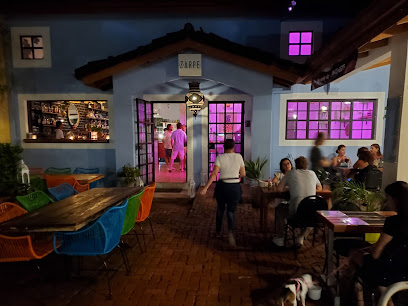
Local Phrases
-
- HelloHola
[oh-lah] - GoodbyeAdiós
[ah-dee-ohs] - YesSí
[see] - NoNo
[noh] - Please/You're welcomePor favor/De nada
[por fah-vor/deh nah-dah] - Thank youGracias
[grah-see-ahs] - Excuse me/SorryDisculpe/Perdón
[dees-kool-peh/pehr-dohn] - How are you?¿Cómo estás?
[koh-moh ehs-tahs] - Fine. And you?Bien. ¿Y tú?
[byen. ee too] - Do you speak English?¿Hablas inglés?
[ah-blahs een-glehs] - I don't understandNo entiendo
[noh ehn-tee-ehn-doh]
- HelloHola
-
- I'd like to see the menu, pleaseMe gustaría ver el menú, por favor
[meh goos-tah-ree-ah vehr ehl meh-noo, por fah-vor] - I don't eat meatNo como carne
[noh koh-moh kahr-neh] - Cheers!¡Salud!
[sah-loohd] - I would like to pay, pleaseMe gustaría pagar, por favor
[meh goos-tah-ree-ah pah-gahr, por fah-vor]
- I'd like to see the menu, pleaseMe gustaría ver el menú, por favor
-
- Help!¡Ayuda!
[ah-yoo-dah] - Go away!¡Váyase!
[vah-yah-seh] - Call the Police!¡Llame a la policía!
[yah-meh ah lah poh-lee-see-ah] - Call a doctor!¡Llame a un doctor!
[yah-meh ah oon dohk-tohr] - I'm lostEstoy perdido
[ehs-toy pehr-dee-doh] - I'm illEstoy enfermo
[ehs-toy ehn-fehr-moh]
- Help!¡Ayuda!
-
- I'd like to buy...Me gustaría comprar...
[meh goos-tah-ree-ah kohm-prahr] - I'm just lookingSolo estoy mirando
[soh-loh ehs-toy mee-rahn-doh] - How much is it?¿Cuánto cuesta?
[kwan-toh kwes-tah] - That's too expensiveEsto es demasiado caro
[ehs-toh ehs deh-mah-see-ah-doh kah-roh] - Can you lower the price?¿Puede bajar el precio?
[pweh-deh bah-har ehl pree-syoh]
- I'd like to buy...Me gustaría comprar...
-
- What time is it?¿Qué hora es?
[keh oh-rah ehs] - It's one o'clockEs la una en punto
[ehs lah oo-nah ehn poon-toh] - Half past (10)Media hora (10)
[meh-dee-ah oh-rah (dies)] - MorningMañana
[mah-nyah-nah] - AfternoonTarde
[tahr-deh] - EveningNoche
[noh-cheh] - YesterdayAyer
[ah-yehr] - TodayHoy
[oy] - TomorrowMañana
[mah-nyah-nah] - 1Uno
[oo-noh] - 2Dos
[dohs] - 3Tres
[trehs] - 4Cuatro
[kwah-troh] - 5Cinco
[seen-koh] - 6Seis
[sehs] - 7Siete
[syeh-teh] - 8Ocho
[oh-choh] - 9Nueve
[nweh-veh] - 10Diez
[dyehs]
- What time is it?¿Qué hora es?
-
- Where's a/the...?¿Dónde está un/el...?
[dohn-deh ehs-tah oon/ehl] - What's the address?¿Cuál es la dirección?
[kwahl ehs lah dee-rehk-syohn] - Can you show me (on the map)?¿Puede mostrarme (en el mapa)?
[pweh-deh mohs-trar-meh (ehn ehl mah-pah)] - When's the next (bus)?¿Cuándo es el próximo (autobús)?
[kwan-doh ehs ehl proh-ksee-moh (ow-toh-boos)] - A ticket (to ....)Un boleto (para ....)
[oon boh-leh-toh (pah-rah)]
- Where's a/the...?¿Dónde está un/el...?
History of Guanacaste
-
Before the arrival of the Spanish, Guanacaste was inhabited by various indigenous groups, including the Chorotega, who were known for their advanced agricultural practices and intricate pottery. The region served as a cultural crossroads, influenced by Mesoamerican civilizations to the north and South American tribes to the south.
-
In the early 16th century, Spanish conquistadors arrived in Guanacaste, leading to the colonization of the region. The indigenous population was dramatically reduced due to disease and conflict. During this period, the Spanish established cattle ranches and farms, which became the economic backbone of the area. The town of Nicoya became an important colonial settlement and a center for trade and governance.
-
One of the most significant historical events in Guanacaste is the Annexation of Nicoya. On July 25, 1824, the Partido de Nicoya (comprising the areas of Nicoya, Santa Cruz, and Liberia) voted to annex itself to Costa Rica rather than Nicaragua. This decision was driven by economic and cultural ties to Costa Rica and is celebrated annually as Guanacaste Day, a national holiday marked by parades, traditional music, and dances.
-
During the late 19th and early 20th centuries, Guanacaste underwent significant economic changes with the development of large-scale cattle ranching and the introduction of coffee plantations. The Pacific Railroad, completed in the early 20th century, further integrated Guanacaste into the national economy, facilitating the export of agricultural products. The region's economy diversified with the introduction of sugar cane and rice farming.
-
In the latter half of the 20th century, Guanacaste began to attract international tourists, drawn by its stunning beaches, national parks, and vibrant culture. The construction of Daniel Oduber Quirós International Airport in Liberia in 1975 significantly boosted tourism, making the region more accessible to foreign visitors. Today, tourism is a major economic driver, with numerous resorts, eco-tourism initiatives, and cultural festivals celebrating Guanacaste's rich heritage.
-
Guanacaste is renowned for its rich cultural traditions, many of which are deeply rooted in its indigenous and colonial past. Traditional music, such as the marimba, and dances like the Punto Guanacasteco, are integral to local celebrations. The Fiesta de la Yegüita in Nicoya, held every December, is a unique blend of indigenous and Catholic traditions, featuring colorful parades and rituals. These cultural expressions are a testament to the region's diverse and vibrant heritage.
Guanacaste Essentials
-
Guanacaste is accessible via the Daniel Oduber Quirós International Airport (LIR) in Liberia, which offers both international and domestic flights. Alternatively, Juan Santamaría International Airport (SJO) in San José is another option, though it requires a longer drive (approximately 4-5 hours) to reach Guanacaste. From either airport, you can rent a car, book a shuttle, or take a domestic flight to smaller airports within Guanacaste, like Tamarindo or Nosara.
-
In Guanacaste, rental cars are a popular choice for tourists due to the region's extensive network of well-maintained roads. Public buses connect major towns and are an economical option but may not be as frequent or timely. Taxis are widely available and relatively inexpensive, and ride-sharing services like Uber are also operational in larger towns. For more remote areas, 4x4 vehicles are recommended due to occasional rough road conditions, especially during the rainy season.
-
The official currency in Costa Rica is the Costa Rican Colón (CRC). U.S. dollars are widely accepted, especially in tourist areas, but it's advisable to carry some local currency for smaller establishments. Credit and debit cards are commonly accepted in hotels, restaurants, and shops. ATMs are plentiful in major towns like Liberia and Tamarindo, but it's a good idea to withdraw sufficient cash if you plan to visit more remote areas.
-
Guanacaste is generally considered safe for tourists, but petty crimes like pickpocketing and bag snatching can occur. Popular tourist towns like Tamarindo, Playas del Coco, and Nosara are relatively safe, but it's wise to avoid isolated areas, especially at night. Always keep your valuables secure and be cautious when withdrawing money from ATMs. Areas with higher crime rates targeting tourists include some parts of Liberia and the outskirts of larger towns.
-
In case of an emergency, dial 911 for immediate assistance. The main hospital in the region is Hospital Enrique Baltodano Briceño in Liberia, which offers comprehensive medical services. For minor health issues, there are numerous clinics and pharmacies throughout Guanacaste. It's recommended to have travel insurance that covers medical emergencies, including evacuation if necessary.
-
Fashion: Do dress comfortably and casually, but bring appropriate attire for upscale restaurants and resorts. Avoid overly revealing swimwear away from the beach. Religion: Do respect local religious customs. Costa Rica is predominantly Catholic, so modest dress is appreciated in churches. Public Transport: Do be patient as buses may not always run on schedule. Don't expect the same level of punctuality as in more developed countries. Greetings: Do greet people with a friendly 'Hola' or 'Buenos Días.' Handshakes are common in formal settings. Eating & Drinking: Do try local dishes like gallo pinto and casado. Don't be offended if service is slower than you’re used to; 'Tico time' is a relaxed approach to punctuality.
-
To experience Guanacaste like a local, visit the vibrant farmers' markets (ferias) in towns like Liberia and Tamarindo for fresh produce and artisanal goods. Engage with locals, as Ticos are known for their friendliness and willingness to share their culture. Don't miss the chance to explore the numerous national parks, such as Rincón de la Vieja and Palo Verde, for hiking, wildlife spotting, and hot springs. For a unique experience, try attending a local fiesta or rodeo, which are integral to Guanacaste's cultural heritage.
Trending Landmark in Guanacaste
-
Monteverde Cloud Forest Biological Preserve
-
Parque Nacional Rincón de la Vieja
-
Parque Nacional Marino Las Baulas
-
Bernabela Ramos Park
-
Parque Nacional Volcán Tenorio
-
JW Marriott Guanacaste Resort & Spa
-
Daniel Oduber Quirós International Airport.
-
Centro de Rescate Las Pumas
-
Parque Nacional Santa Rosa
-
Monteverde Butterfly Gardens
-
Rio Negro Hot Springs
-
Parque Nacional Guanacaste
-
Costa Rica Unique Tours & Transfers
-
Black Stallion Eco Park & Estates
-
Viento Fresco Waterfall
Nearby Cities to Guanacaste
-
Things To Do in Liberia
-
Things To Do in Playa Flamingo
-
Things To Do in Tamarindo
-
Things To Do in Monteverde
-
Things To Do in La Fortuna
-
Things To Do in San Juan del Sur
-
Things To Do in Rivas
-
Things To Do in Ometepe
-
Things To Do in Jaco
-
Things To Do in San Jose
-
Things To Do in Granada
-
Things To Do in Manuel Antonio
-
Things To Do in Masaya
-
Things To Do in Managua
-
Things To Do in Jinotega












